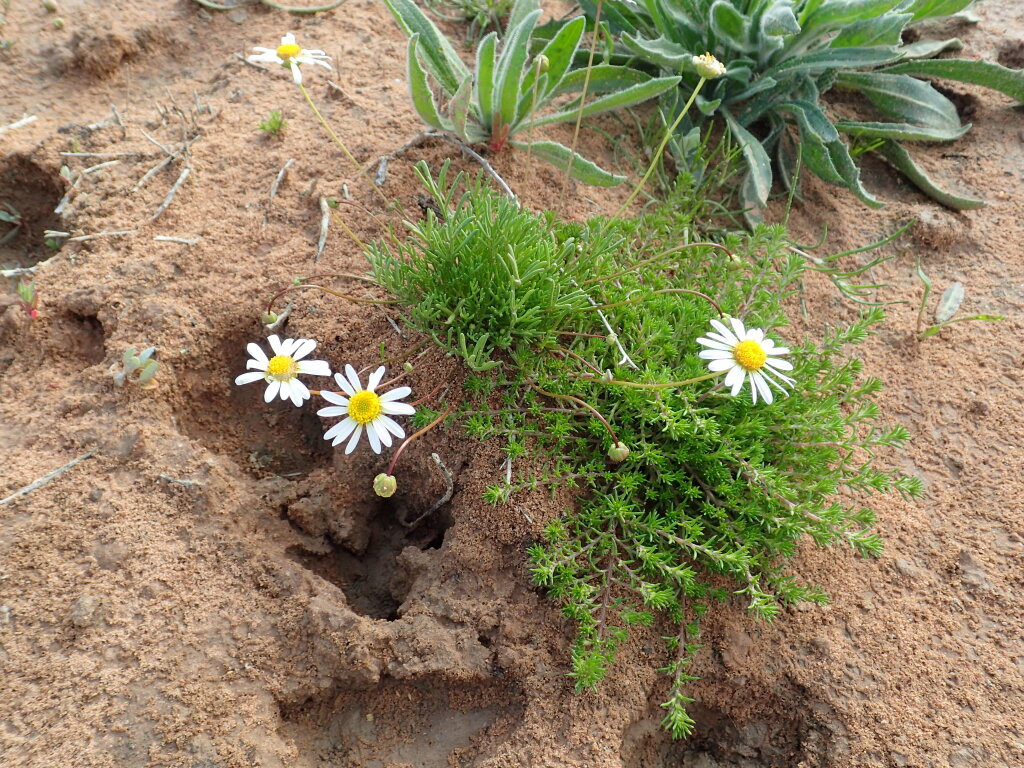Brachyscome dichromosomatica var. alba
C.R.CarterDecumbent to ascending annual, 2–15 cm high, mainly glabrous but sometimes with scattered eglandular hairs. Leaves mostly or only basal, sometimes linear but usually pinnatisect, 1–8 cm long, segments 5–9, linear, to c. 15 mm long, often slightly succulent, mainly glabrous but some broad eglandular hairs usually present; lobes linear. Bracts 8–13, 1-seriate, c. equal, very widely obovate to ovate or elliptic, 3.5–6 mm long, 1.5–4 mm wide, mainly herbaceous but with scarious, often purplish margins, glabrous; ligules (5–)6–12 mm long, white; disc florets up to 50. Cypselas more or less obtriangular, straight, 2.5–3.5 mm long (excluding pappus), 1.5–2 mm wide, whitish or pale brown, with a dense, unbroken line of c. 2 mm long, eglandular hairs on the ridge of each lateral face; pappus 1–1.3 mm long, bristles rather broad, irregularly fimbriate, fused for about one-third their length. Flowers Sep. (1 record).
GleP, MSB. Also in SA, NSW. Known in Victoria by a single 2012 collection from Neds Corner Station in the far north-west, where growing in a small run-on in chenopod shrubland.
Likely to be more widespread and overlooked for the very similar Brachyscome lineariloba from which it differs morphologically by the longer ligules, and cytologically in having just two pairs of chromosomes.
 Spinning
Spinning
